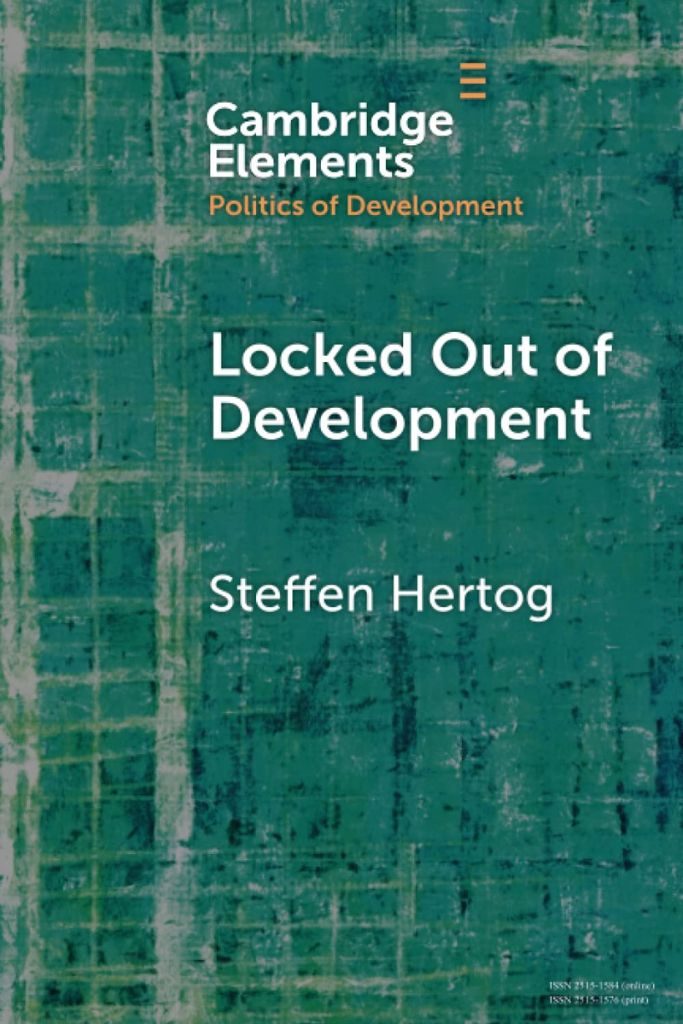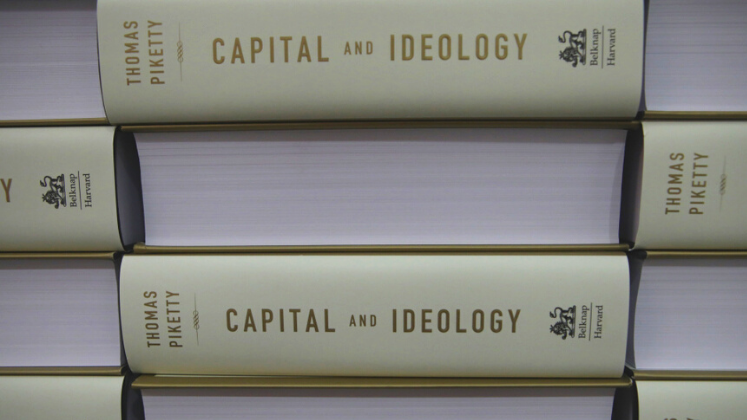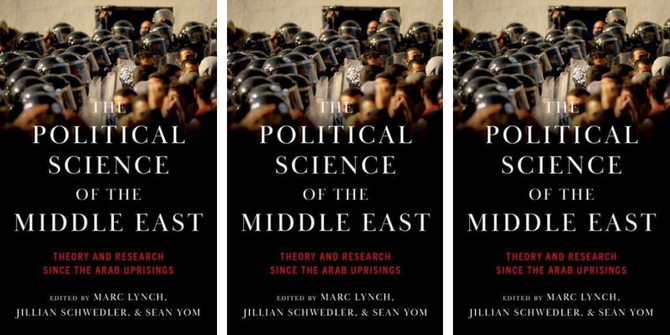In Locked Out of Development: Insiders and Outsiders in Arab Capitalism, Steffen Hertog critiques mainstream development models in the Middle East, focusing on state intervention and segmented market economies. Although Yusuf Murteza suggests the book under-examines neoliberalism’s prevalence, he finds its analysis on the state’s role in establishing the insider-outsider division in the economy nuanced and valuable.
 Clusters of economic and political theorists have long been discussing how different actors prioritise and frame their understanding of “development”. Post-development and degrowth scholars such as Arturo Escobar, Gustavo Escobar, Wolfgang Sachs, and Jason Hickel announced the death of the mainstream development model as a project. They argued “the project of development” may not be equally beneficial to all societies, since the project carries ethnocentric and universalist dimensions which contribute to the hegemony of the West.
Clusters of economic and political theorists have long been discussing how different actors prioritise and frame their understanding of “development”. Post-development and degrowth scholars such as Arturo Escobar, Gustavo Escobar, Wolfgang Sachs, and Jason Hickel announced the death of the mainstream development model as a project. They argued “the project of development” may not be equally beneficial to all societies, since the project carries ethnocentric and universalist dimensions which contribute to the hegemony of the West.
The ‘one size fits all’ idea of neoliberal development, which utilises finance and corporate capital, has gradually been replaced by alternative forms of development
The “one size fits all” idea of neoliberal development, which utilises finance and corporate capital, has gradually been replaced by alternative forms of development. Growing disillusionment with the Anglo-Saxon economic model increased the importance of examining alternative political and economic configurations both inside and beyond developed Western states. Varieties of Capitalism (VoC) theory’s significance can be grasped with its emphasis on existing similarities and differences within the institutions of developed economies. Recently, scholars have taken these insights seriously and benefited from the VoC framework to explain the reasons why political and economic institutions differ across societies. Discourse on the MENA region in terms of democracy and development may suffer from orientalist explanations that directly link religion and culture to the region’s political and economic stagnation. Steffen Hertog’s Locked Out of Development takes issue with what mainstream development scholars consider the political and economic inability of societies in the Middle East to take the Western route and realise neoliberal reforms in order to ensure economic development, productivity and innovation.
Neoliberal narratives suffer from a partial outlook. They trace the failures of development attempts by focusing on policymakers’ level of adherence to marketisation and privatisation.
Hertog’s main arguments throughout the book are threefold. First, neoliberal narratives suffer from a partial outlook. They trace the failures of development attempts by focusing on policymakers’ level of adherence to marketisation and privatisation. They consider ensuring faith in the market mechanisms of production and distribution systems as paramount. However, non-economic, country-specific problems matter. In the case of the Arab world, the deep dividing line of insider-outsider segmentation across societies has more explanatory power than classical narratives of having too much or too little market (81). Second, Hertog believes a comparative perspective situated within a global context carries crucial insights. The selected countries cannot be examined solely by focusing on within-region differences but should be considered within the global development trajectory and compared with developed countries (7). Third, the role of the state has a somewhat ambiguous position in development theory. The concept of a “developmental state” has added a further twist. The characteristics of the state and its symbiotic relationship with labour and the private sector need to be addressed when explaining factors contributing to the persistence of the Arab world’s development problem (8).
The role of the state has a somewhat ambiguous position in development theory
Hertog begins with a detailed examination of academic literature on the political economy of the Middle East, the varieties of capitalism approaches, and his conceptualisation of segmented market economies (SEME). The second chapter adopts a historical perspective and presents the case selected countries’ political and economic transformations after World War II. In the third chapter, Hertog reveals his argumentation of the SEME framework by bringing the state, labour market, business sector and skill composition to light. Detailed analysis of the country case studies follows, accompanied by SEME and future research directions. Lastly, Hertog sums up the reasons for the political and economic inability of the region to take the Western route.
Hertog argues that the VoC approach, with its emphasis on the heterogeneity of existing capitalisms, is useful to explain the unique characteristics of Arab capitalism. Different compositions of firms, the finance sector, networks, and the skill system create ideal-type interactions (those which typify certain characteristics of a phenomena) and lead to diversification within capitalism. The original VoC approach analysed several OECD countries from the developed world. In time, scholars used the explanatory power of VoC to explain the development performances of non-Western countries with specific modifications. Taking insights from recent accounts of VoC literature, Hertog believes the approach fits the Arab world well (8).
In broad terms, the state [in the Arab world] functions as the voice of insiders’ interests to quash any outsider’s attempt to reconfigure access to key resources.
There are two key dynamics in the region. As the second chapter discusses, the state has been a key actor in structuring the playing field between different interests to operate in the region (9). The interventionist and distributive characteristics of the state go hand in hand with the other dynamic, namely the persistence of insider-outsider division in the economy. In broad terms, the state functions as the voice of insiders’ interests to quash any outsider’s attempt to reconfigure access to key resources. Hertog warns that the nuanced structure of the SEME model applies only to the core members of the region, such as Algeria, Egypt, Jordan, Morocco, Tunisia, Syria, and Yemen. The key filter behind this selection of countries is their state-building projects between 1950 and 1970 (4-5).
Strategies of keeping public sector employment high with military jobs, large redistribution policies, food subsidies, and price controls are still prevalent in the region, demonstrating its nationalist and statist legacy.
Hertog finds the roots of his SEME model in Arab nationalism in the post-independence era. The state-building projects of the selected countries fused with nationalist and statist ideologies at the time. Discussion on the region’s long history brings up the question of path-dependence, which is used to describe the limiting power of past decisions over later trajectories. Hertog avoids engaging with these long-term theories, believing them unsuitable for a short book, and the key characteristics of the SEME model originated recently. Nationalisation policies and active intervention in the economy were characteristics of Arab nationalism (15). In state-building projects, Egypt and Syria set the parameters, which were later copied by other states. Strategies of keeping public sector employment high with military jobs, large redistribution policies, food subsidies, and price controls are still prevalent in the region, demonstrating its nationalist and statist legacy (28).
The detailed empirical discussion of the SEME is at the heart of the book. The framework is constituted by the state, labour market, business sector and skill system (9). The distributive character of a state can be located by examining the share of public employment, which remains high from a global perspective. Also, the state extensively regulates labour markets, holding key strongholds to access land and credit (29-30). Hertog argues these factors lead to segmented labour and private sectors, while keeping the skill level low. The presence of the state in the labour market ensures insider-outside division. Since there is little mobility, insiders rarely lose their position. Outsiders cannot reach to the welfare protection schemes by the state. This leads to social exclusion and an unproductive environment (32-48).
Hertog claims state intervention in the private sector creates unique opportunities for crony networks, whereby politically connected companies benefit from credits and licences.
Similar dynamics take place in the business sector, where large firms and clusters of small firms coexist (55). Hertog claims state intervention in the private sector creates unique opportunities for crony networks, whereby politically connected companies benefit from credits and licences. Business actors with outsider status engage in unproductive small-scale activities (58-60). The skill system needs to be thought of in relation to the segmented labour and business sectors. Low skill levels prevent mobility and limit innovation and technological development (69).
Overall, Hertog argues that state intervention in the region establishes the insider-outsider division in the economy. Hertog’s emphasis on bringing the state back into the analysis is beneficial. In the field of comparative politics, the idea of the state as an autonomous actor remained on the margins until the 1980s. The book’s limitations come in two forms. First, it doesn’t mention how global capitalist relations fit into the SEME. Hertog’s defence with the limitation of economic globalisation in the region may not offer a solution, since the dynamics of global capitalist accumulation depend on drawing materials from peripheral countries without contributing to them. Second, Hertog’s claim of neoliberalism’s low presence in the Arab world is dubious. Several scholars (Jason Hickel, Philip Mirowski) argue that states with strong capacity can implement the necessary reforms for deregulation and privatisation. Thus, the presence of neoliberalism and strong state capacity is not mutually exclusive. In the Middle East, we see a unique mixture of neoliberal policy reforms with strong state capacity. Even though Hertog constructs his own case, adapting earlier approaches to VoC and development topics and to explain the MENA region, policymakers, development specialists, and academics will find dry economic analysis alone is not enough. More nuanced analyses that consider the symbiotic interactions between the state, the business sector, and labour force are necessary. Only by doing this is it possible to acknowledge how politics mingle with economics, and to design alternative development programmes in response.
This post gives the views of the author, and not the position of the LSE Review of Books blog, or of the London School of Economics and Political Science.
Image Credit: AlexAnton on Shutterstock.







